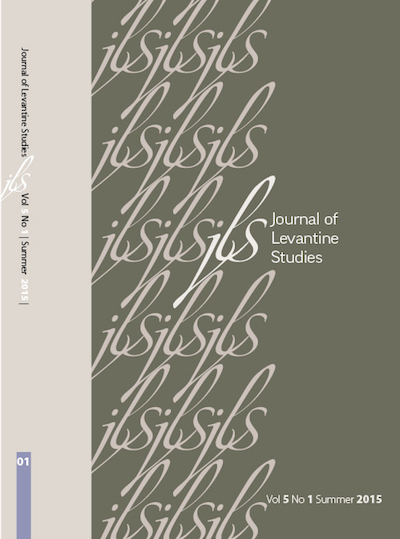-
Add to cartQuick view
Partitions and Translations: Arab Jewish Translational Models in Fin de Siècle Palestine
Free!This article offers a new reading into translation works from early twentieth-century Palestine which operated in between the Arabic-Hebrew cultural and linguistic borderlands. Against the backdrop of the political and social events in that period which dominated by processes of national, ethnic, and religious partitions, the article explores the ways in which these Arab-Jewish translators fundamentally challenges the nationalistic and monolingual separatist ideology and represent an alternative political and cultural route. The article explores their unique translation methods that were based on four principles: Polyglot fusion—mixing Arabic and Hebrew, Jewish and Muslim traditions; loose distinction between oral and written traditions; dialogical approach that emphasizes the intertextuality of literary traditions and the intersections of languages and cultures; and the unfixed intersection between original source and translation. The fluidity that is inherent in these translation methods becomes a source of resistance to the dominant political force and dismantles any (national) claim over exclusive ownership of texts, traditions, or languages. In a time of struggle over the ownership of the (biblical) land and the (biblical) text, these translations focused on tales and traditions free from ownership and without any stable original source.
Add to cartQuick view -
Add to cartQuick view
The Rear Side of the Front: Gaza and Its People in World War I
Free!During the First World War, the city of Gaza, a regional hub of forty thousand souls and a major market and exporter of grains, turned into a battlefield. While the military and political consequences of this arena are well researched, this article examines its civil and social aspects as well, in order to better understand the story of the First World War in Palestine. Using both British and Ottoman documentation alongside civil accounts and memoirs, the article discusses the reasons, methods, and effects of the city’s complete evacuation and the massive destruction of its physical environment. The civil perspective of the war reflected in the fate of Gaza poses a challenge to common chronological and spatial presumptions about the war itself, and it allows a rethinking of the Mandate period in the light of postwar circumstances.
Add to cartQuick view
- Home
- About JLS
- Issues
- Vol. 9 No. 1 | Summer 2019
- Vol 8 No 2 Winter 2018
- Vol. 8, No. 1: Summer 2018
- Vol. 7, No. 2: Winter 2017
- Vol. 7, 1: Summer 2017
- Vol. 6, Summer/Winter 2016
- Vol. 5, No. 2 Winter 2015
- Vol. 5, No. 1 Summer 2015
- Vol. 4, No. 2 Winter 2014
- Vol. 4, No. 1 Summer 2014
- Vol. 3, No. 2 Winter 2013
- Vol. 3, No. 1 Summer 2013
- Vol. 2, No. 2 Winter 2012
- Vol. 2, No. 1 Summer 2012
- Vol. 1, No. 2 Winter 2011
- Vol. 1, No. 1 Summer 2011
- Blog
- dock-uments
- Subscribe
- Submit
- Contact



